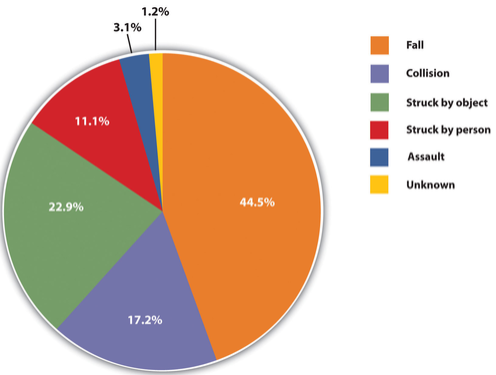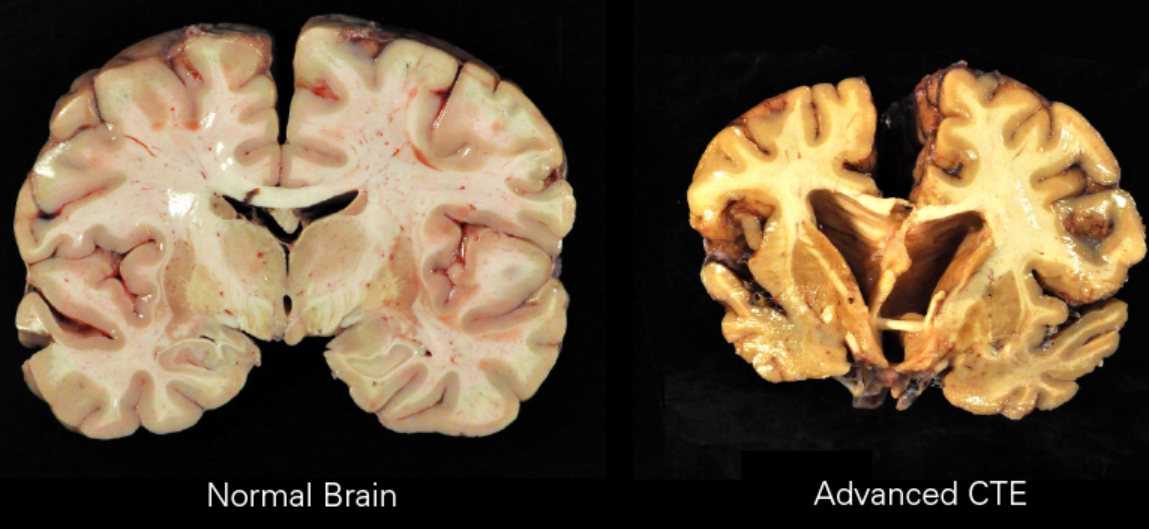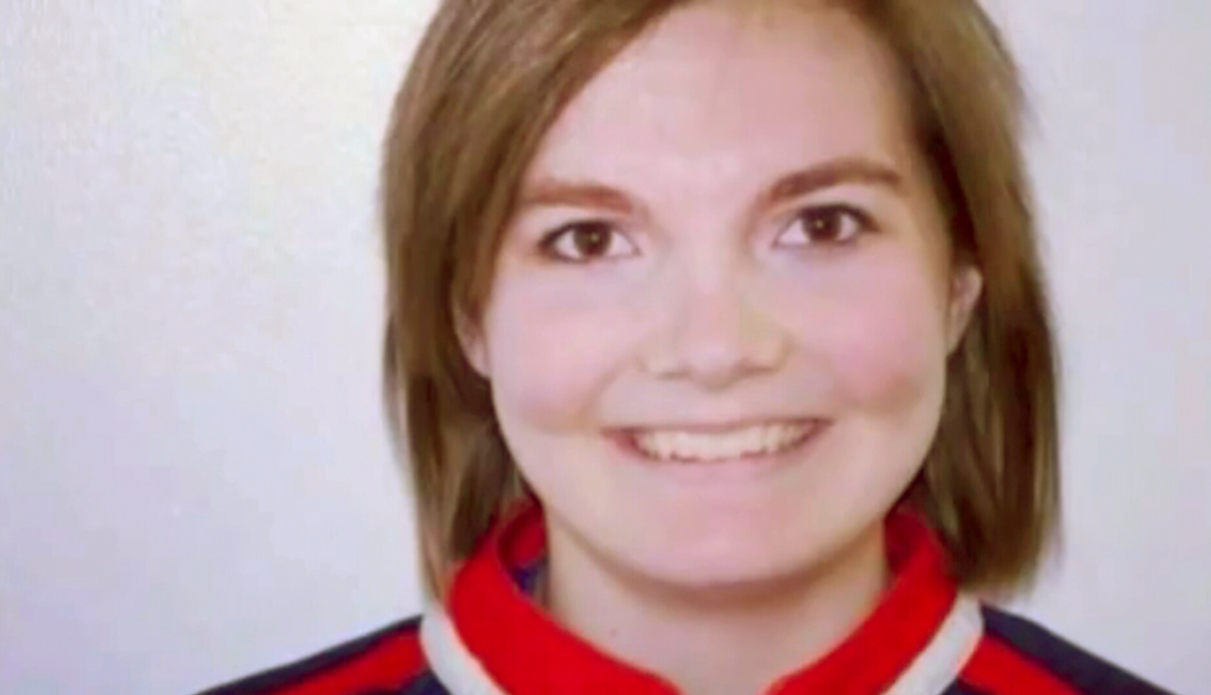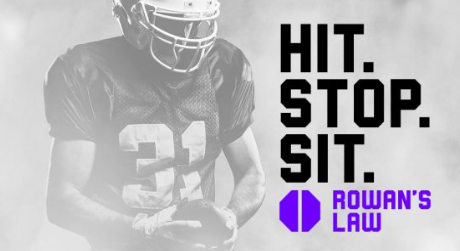This is an old revision of the document!
Table of Contents
Concussion
Introduction
Concussions, also known as mild traumatic brain injury (TBI), are head injuries that occur after a blunt force to the head resulting in the brain moving back and forth. Interestingly, the word concussion comes from the Latin word conutere, which means “to shake violently” (Bhandari, 2019). Concussions are commonly caused by events such as car accidents, falls, sports injuries, and assaults. The impact on brain injury varies depending on the severity of the hit. The most commonly observed signs and symptoms of concussions are headaches, dizziness, nausea or vomiting, and slow reaction to stimuli (Healthline, 2017). People who experience a concussion usually recover quickly, but in some extreme cases, symptoms can last for days or weeks. Though one concussion is unlikely to do brain damage, repeated hits to the head can have severe impacts on the brain and affect brain functioning. It is estimated that athletes in the U.S. experience about 300,000 concussions each year (“11 Facts About Concussions,” n.d.). It is important to seek medical attention after experiencing a concussion. If a second concussion is experienced before the first concussion has time to recover, serious complications can arise.
Cause
Cerebrospinal fluid (CSF) is a colorless and transparent fluid inside the skull that encompasses and preserves the central nervous system consisting of the brain and spinal cord. Cerebrospinal fluid cushions the brain and spinal cord, assisting in preventing any abrupt movements, brain damages, and jolts and bumps. Any violent hit to the head, neck and thus to the central nervous system can lead the brain to slide backwards and forwards forcibly against the inner walls of the skull, thus rupturing blood vessels and injuring the nerve tissues which in turn cause the accumulation of blood. Concussions are most frequently caused by events, including car accidents, sports injuries, cycling accidents, falls, playground coincidences in children, assaults and other traumatic events causing brain injuries. These mentioned causal events and injuries may affect regular brain functioning, leading to the signs and symptoms of concussion.
Signs & Symptoms
Signs and symptoms of a concussion vary and mainly depends on both the individual being injured and the severity of the damage as well. Therefore, it is significantly crucial and highly recommended to recognize the signs and symptoms that one can experience from concussions. The most common physical signs of a concussion may include headache, hearing ringing noises in the ear, nausea, vomiting, blurry vision, dizziness, slurred speech, and tiredness. It is worth mentioning that in some cases, the signs and symptoms may not begin immediately after a concussion and thus starts developing hours, days, weeks, or months after the injury. The common non-immediate symptoms may include amnesia, which is a partial or total loss of memory, depression, irritability, lack of concentration, disturbed sleep, and sensitivity to light. Furthermore, in the case of experiencing any of the symptoms, including prolonged headache, persistent dizziness, constant memory loss, and loss of sense of smell or taste, immediate medical care would be required. Concussion signs are known to be more challenging to encounter in young children as they may not be able to describe their feelings and symptoms, including altered appetite, walking or standing unsteadily, irritability, and altered sleep patterns. Children experiencing some severe signs and symptoms including loss of consciousness, bleeding from nose or ears, seizure, prolonged dizziness and headache, confusion, blurred vision need emergency medical care.
Diagnosis
Pathogenesis
Prognosis
Chronic traumatic encephalopathy (CTE)
Like Alzheimer’s, CTE is a form of tauopathy, a class of neurodegenerative diseases involving the aggregation of tau proteins in the brain. The disease is caused by repeated injuries to the head. Although the exact amount of trauma required for the condition to occur is unknown it is believed to take many years to develop (Asken et al., 2017). Most documented cases have occurred in athletes involved in contact sports such as boxing, football, and hockey (Mckee et al., 2009). CTE is a progressive disease meaning the symptoms can worsen over time leading to problems like memory loss and suicidality. Those with CTE can experience a broad range of symptoms but generally they result in behavioural, mood, and cognitive problems (Asken et al., 2017).
Second impact syndrome
Second impact syndrome (SIS) occurs when the brain swells rapidly after a person suffers a second concussion before symptoms from an earlier one has subsided. This second blow may occur minutes, days or weeks after an initial concussion, and even the mildest concussion can lead to SIS. The condition is often fatal, and almost everyone who is not killed is severely disabled. The cause of SIS is uncertain, but it is thought that the brain's arterioles lose their ability to regulate their diameter, and therefore lose control over cerebral blood flow, causing massive cerebral edema (Cantu, 2011).
Post-concussion syndrome
In post-concussion syndrome, symptoms do not resolve for weeks, months, or years after a concussion, and may occasionally be permanent. The question of whether the syndrome is due to structural damage or other factors such as psychological ones, or a combination of these, has long been the subject of debate (Mittenberg & Strauman, 2000).
Cumulative effects
The severity of concussions and their symptoms may worsen with successive injuries, even if a subsequent injury occurs months or years after an initial one (Harmon, 1999). Cumulative effects may include psychiatric disorders and loss of long-term memory. For example, the risk of developing clinical depression has been found to be significantly greater for retired football players with a history of three or more concussions than for those with no concussion history. Three or more concussions is also associated with a fivefold greater chance of developing Alzheimer's disease and a threefold greater chance of developing memory deficits (Cantu, 2007).
Statistics
Treatment
Case Study - Rowan Stringer
Rowan Stringer was a grade 12 student who had recently been accepted in the University of Ottawa’s nursing program for the Fall of 2013 with the hope of becoming a paediatric nurse. However, all of this changed in May 2013
Rowan's Final 10 Days
Friday, May 3rd, 2013
Rowan captained her high school rugby team during a three-game tournament. During the second game she was hit in the head. However, she later returned to the same game. Later in the evening she complained of a headache to her mom and asked for a painkiller.
Monday, May 6th, 2013
Rowan is once again hit in the head during a game and the headaches return.
Tuesday, May 7th, 2013
Rowan doesn’t feel right. Texts messages with her friend showed she was aware she probably had a concussion. In fact, one of her texts indicated she had Googled ‘concussion.’ However, when asked if she will play the game the next day her reply was “Yeah. Nothing can stop me! Unless I’m dead.” When asked if she will get checked about her symptoms the reply was “Nope. Just see if it gets worse.” And finally, when her friend suggested seeing a Doctor Rowan said “Meh. What’s some brain damage gonna hurt.” In other messages that night Rowan referred to her injuries as “warrior wounds” and wore them with pride.
Wednesday, May 8th, 2013
Rowan is tackled and hits her head on the ground. She lost consciousness and was rushed to the hospital.
Saturday, May 11th, 2013
With no possibility of recovery Rowan’s last wish was for her heart, lungs, liver, pancreas, kidneys and corneas to be donated.
Sunday, May 12th, 2013 – Mothers day
Rowan is removed from life support. Her official cause of death was Second impact syndrome. It’s believed she never told her parents or any adults about the headaches. She was 17.
Rowan’s Law
Ontario passed Rowan's Law. This new legislation is intended to protect amateur athletes by improving concussion safety on the field and at school (Hall, 2016).



